When preparing for your next outdoor adventure, one of the most important tools you can carry is a camping knife. This versatile piece of equipment is not just a basic knife; it can serve multiple purposes, from food preparation to emergency situations. Selecting the right camping knife involves understanding its essential features and how they can enhance your outdoor experience. In this article, we’ll explore the key features of camping knives and explain why they are vital for every outdoor adventurer.
Understanding the Purpose of a Camping Knife
What Is a Camping Knife?
A camping knife is a specialized tool designed for outdoor activities such as hiking, camping, and backpacking. While its primary function is cutting, its versatility makes it useful for many other tasks. These tasks can include slicing food, whittling wood, setting up camp, or even performing first aid in emergencies.
Unlike kitchen knives, camping knives are made to withstand the rigors of nature. They are typically more rugged and durable, allowing them to perform effectively in harsh outdoor environments. Understanding the multifunctional nature of a camping knife is crucial for selecting the right one for your adventures.
Why Do You Need a Camping Knife?
Having a camping knife in your gear can greatly improve your efficiency and safety during outdoor activities. It allows you to perform various tasks with ease, reducing the need for bulky equipment. A camping knife can help you prepare meals by cutting vegetables or meat, making it an essential tool for cooking over a campfire.
In emergency situations, a camping knife can also serve as a means of self-defense or help in first aid scenarios. The ability to cut bandages, rope, or other materials can be critical when facing unexpected challenges in the wilderness. Therefore, carrying a camping knife is not just a convenience; it’s often a necessity for those who venture outdoors.
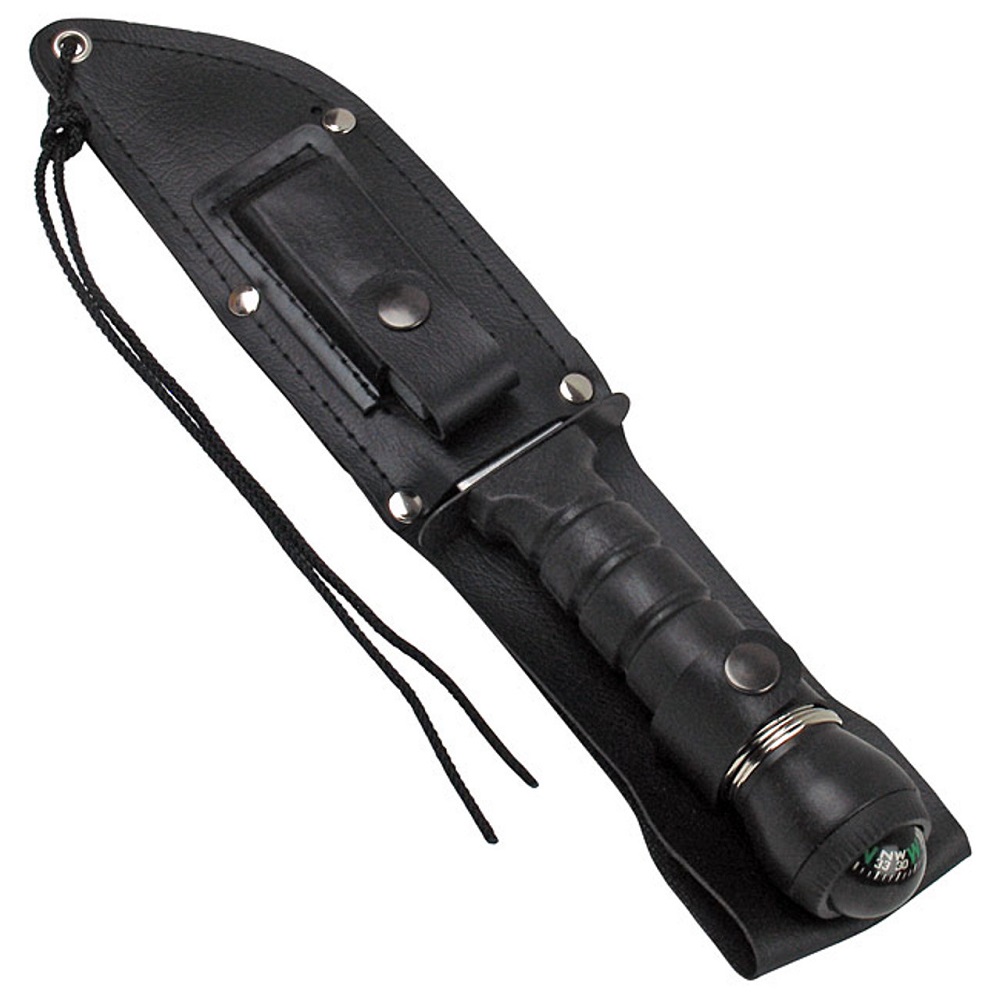
Key Features of a Knife
Blade Material
The blade material is one of the most important aspects of a camping knife. Different materials offer varying levels of strength, durability, and corrosion resistance. Two common types of blade materials are stainless steel and carbon steel.
Stainless Steel: This type is known for its resistance to rust and corrosion, making it ideal for outdoor use in varying weather conditions. Stainless steel is often easier to maintain and requires less frequent sharpening. However, it can be less durable than carbon steel when it comes to holding an edge.
Carbon Steel: Carbon steel blades are known for their superior sharpness and edge retention. While they are more challenging to maintain, as they are prone to rust, their cutting performance is often superb. Adventurers who prioritize performance over maintenance may find carbon steel to be a preferable choice.
Blade Design and Shape
The design and shape of the blade significantly affect a camping knife’s functionality. Common blade shapes include drop point, clip point, and tanto blades.
Drop Point Blades: These blades have a convex curve, which allows for better control when cutting. They are versatile and work well for tasks like skinning animals or preparing food.
Clip Point Blades: Featuring a pointed tip, these blades excel at piercing and detail work, making them suitable for tasks that require precision.
Tanto Blades: Known for their unique flat tip, tanto blades are ideal for thrusting and piercing tasks. They are especially useful in survival situations where strength and durability are necessary.
Choosing a blade shape suited to your specific needs will greatly enhance the knife’s functionality in the outdoors.
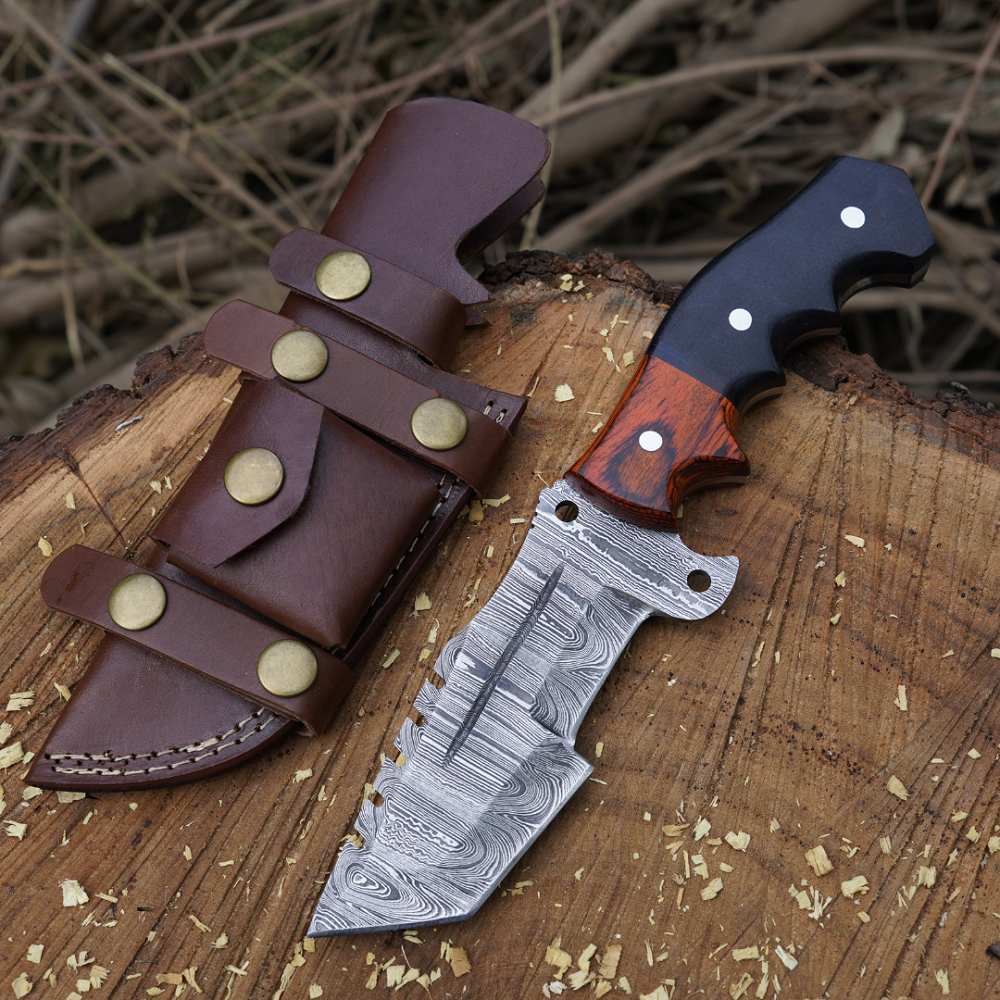
Handle Comfort and Grip
Equally as important as the blade is the comfort and grip of the handle. A good camping knife should feel secure in your hand, allowing you to use it for extended periods without discomfort. The handle material can vary, with options ranging from rubber to wood.
When selecting a camping knife, consider the following popular handle materials:
Rubber: Offers a non-slip grip and enhances comfort. This material is ideal for various weather conditions, as it provides excellent control even when wet.
Plastic: Lightweight and durable, plastic handles can be molded for ergonomic comfort. They are easy to clean but may not offer as much grip as rubber.
Wood: A classic option, wooden handles provide a natural feel and aesthetic appeal. However, they may require more care to prevent moisture damage.
Evaluate the handle design, checking for finger grooves or textured surfaces that enhance grip. Getting a knife that feels good in your hand is vital for safety and efficiency while performing outdoor tasks.
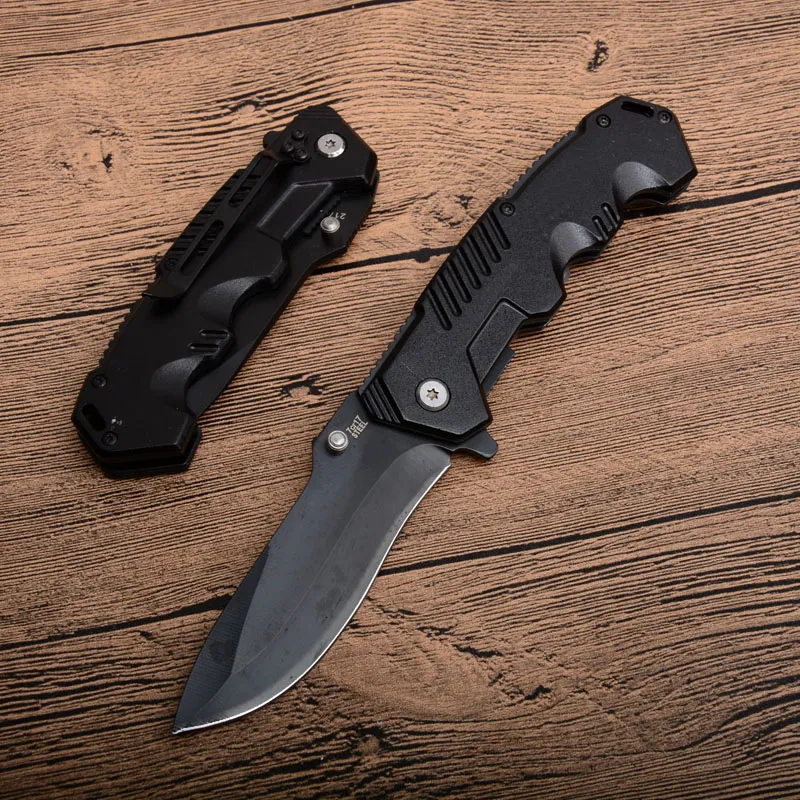
Additional Functions to Consider
Integrated Tools
Modern camping knives often feature additional functions beyond simple cutting. Many come equipped with tools like bottle openers, screwdrivers, or lanyard holes. These multipurpose knives can enhance your camping experience by allowing you to tackle various challenges with one device.
For example, a knife with an integrated can opener can make meal preparation easier when camping in remote areas. This versatility can help reduce the number of tools you need to carry, ultimately lightening your load. Before purchasing a camping knife, consider what additional tools may be advantageous for your needs.
Sheath or Carrying Case
A good camping knife should come with a reliable sheath or carrying case. The sheath protects the blade, ensuring it remains sharp and safe when not in use. It also allows for easy storage and transportation, reducing the risk of injury.
When selecting a camping knife, look for cases made from durable materials that can withstand outdoor conditions. Some sheaths even include additional pockets for storing other accessories like honing rods or fire starters. A well-designed sheath adds convenience and safety to your camping experience.
Weight and Size
The weight and size of a camping knife can significantly impact your outdoor experience. Heavier knives may be more durable and robust, but they can also add unnecessary weight to your backpack. Conversely, lighter knives may be easier to carry but could sacrifice some functionality or durability.
When choosing a camping knife, it’s important to find a balance between weight and utility based on your intended activities. If you’re planning longer hiking trips, a lighter knife may be more suitable. However, for heavy-duty tasks or survival situations, a more robust knife may be warranted.
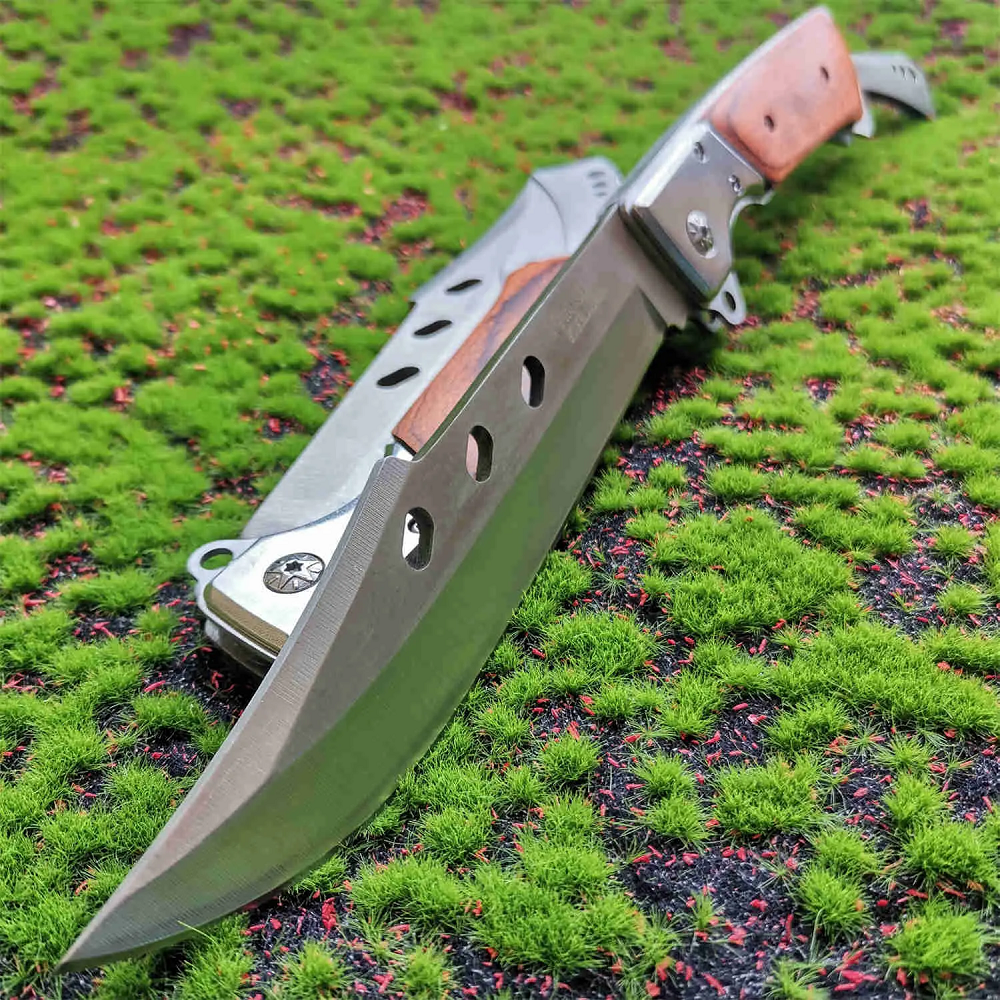
Maintenance Tips for Your Camping Knife
Regular Sharpening
To keep your camping knife in optimal condition, regular sharpening is essential. A dull blade not only makes tasks harder but also increases the risk of accidents. Learn how to sharpen your knife properly using either a whetstone or a honing tool. Knowing the right angle to maintain while sharpening will keep the blade edge aligned and functioning efficiently.
For routine maintenance, many outdoor enthusiasts carry a small sharpening stone or a portable sharpener. This allows for quick touch-ups on-the-go, ensuring that your knife remains sharp and ready for action at all times.
Cleaning and Storage
After each use, it’s crucial to clean your camping knife. Dirt, moisture, and food particles can lead to corrosion if left on the blade. A simple wash with warm water and mild soap is usually sufficient. Always ensure your knife is completely dry before storing it to prevent rust buildup.
When storing your knife, keep it in its sheath to protect the blade. Avoid placing it in locations where it may become damaged or tangling with other tools. A dedicated storage area, such as a toolkit or camping pouch, will help maintain the knife’s integrity while extending its lifespan.
Choosing the Right Camping Knife
Personal Needs and Preferences
When selecting a camping knife, consider your personal needs and preferences. Are you an experienced outdoors enthusiast or a beginner? Understanding your skill level will help you choose a knife that matches your capabilities.
Consider the types of activities you plan to engage in during your camping trips. If you enjoy fishing, hiking, or hunting, specific knife features may be more beneficial. Take the time to assess your needs before making a purchase.
Research and Reviews
Before making a decision, do thorough research on the available options. Online reviews and comparisons can provide insights into the performance and durability of different camping knives. Consulting with fellow outdoor enthusiasts or reading reputable gear guides can also assist in narrowing down your choices.
Make a list of the features that matter most to you and compare different models based on your findings. Spending time researching will pay off, ensuring that you choose a camping knife that will serve you well for years to come.
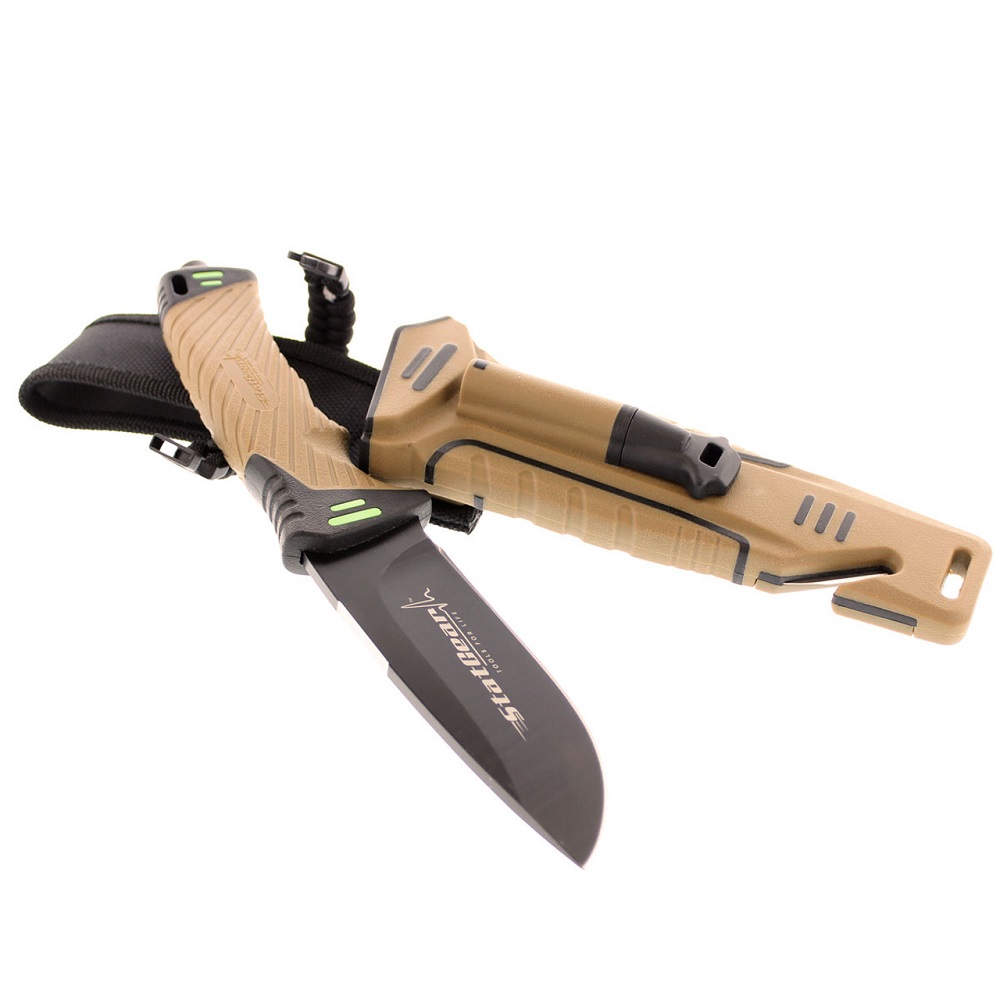
Conclusion
Embrace the Adventure
In conclusion, a quality camping knife is an essential tool for any outdoor adventurer. The right knife will enhance your experience, making tasks easier and safer. By understanding the essential features to look for, you can select a camping knife that meets your needs perfectly.
Invest in Quality
From the blade material and design to the handle comfort and additional tools, every aspect matters when choosing a knife. Investing in a quality camping knife will not only prolong its lifespan but will also ensure that it complements your outdoor adventures.
As you prepare for your next trip into the wilderness, prioritize finding the perfect camping knife. With the right tool at your side, you can confidently tackle any challenges that come your way, making your outdoor experience both enjoyable and memorable. Embrace the adventure and let your knife be an indispensable companion during your journeys into nature.